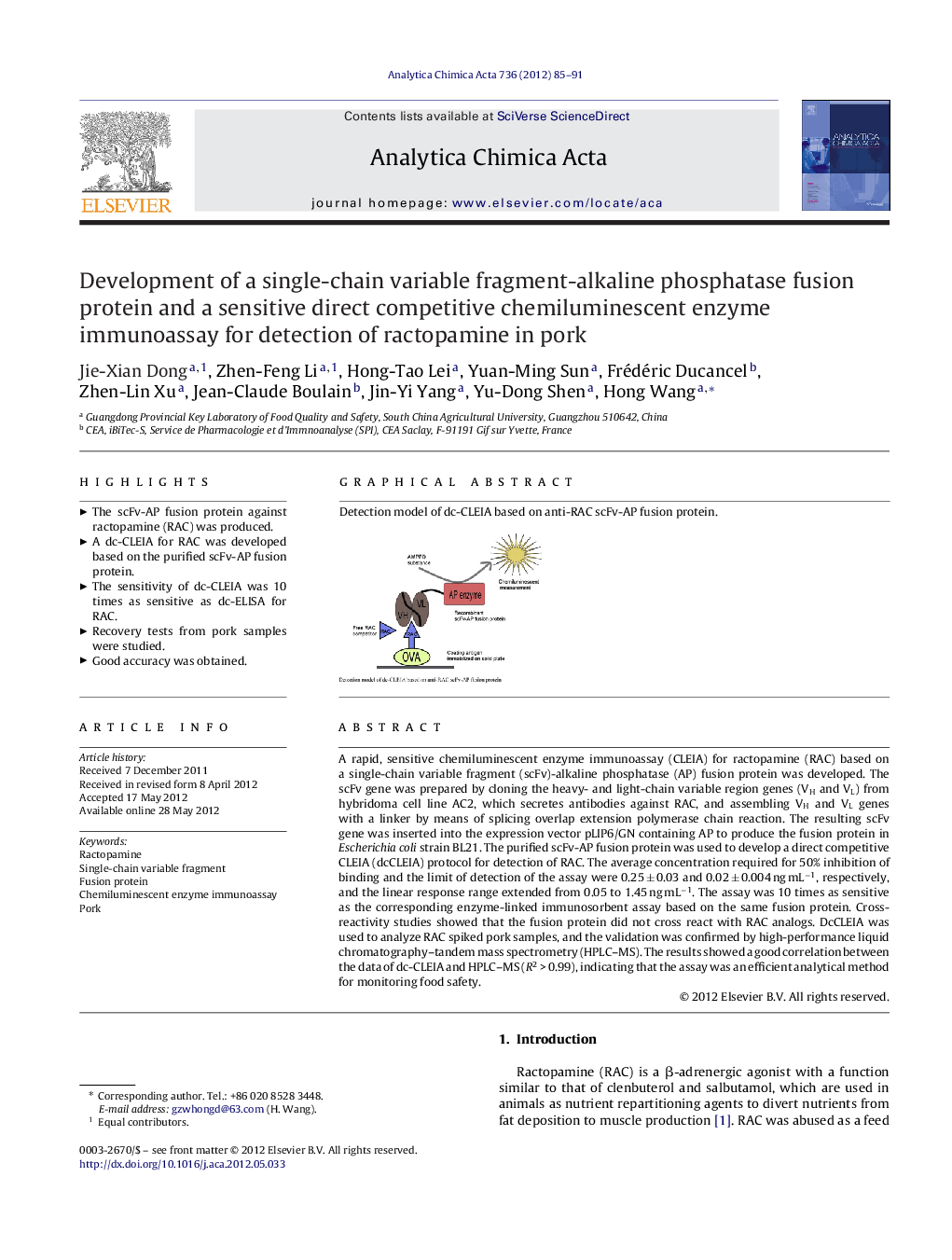| Article ID | Journal | Published Year | Pages | File Type |
|---|---|---|---|---|
| 1166068 | Analytica Chimica Acta | 2012 | 7 Pages |
A rapid, sensitive chemiluminescent enzyme immunoassay (CLEIA) for ractopamine (RAC) based on a single-chain variable fragment (scFv)-alkaline phosphatase (AP) fusion protein was developed. The scFv gene was prepared by cloning the heavy- and light-chain variable region genes (VH and VL) from hybridoma cell line AC2, which secretes antibodies against RAC, and assembling VH and VL genes with a linker by means of splicing overlap extension polymerase chain reaction. The resulting scFv gene was inserted into the expression vector pLIP6/GN containing AP to produce the fusion protein in Escherichia coli strain BL21. The purified scFv-AP fusion protein was used to develop a direct competitive CLEIA (dcCLEIA) protocol for detection of RAC. The average concentration required for 50% inhibition of binding and the limit of detection of the assay were 0.25 ± 0.03 and 0.02 ± 0.004 ng mL−1, respectively, and the linear response range extended from 0.05 to 1.45 ng mL−1. The assay was 10 times as sensitive as the corresponding enzyme-linked immunosorbent assay based on the same fusion protein. Cross-reactivity studies showed that the fusion protein did not cross react with RAC analogs. DcCLEIA was used to analyze RAC spiked pork samples, and the validation was confirmed by high-performance liquid chromatography–tandem mass spectrometry (HPLC–MS). The results showed a good correlation between the data of dc-CLEIA and HPLC–MS (R2 > 0.99), indicating that the assay was an efficient analytical method for monitoring food safety.
Graphical abstractDetection model of dc-CLEIA based on anti-RAC scFv-AP fusion protein.Figure optionsDownload full-size imageDownload as PowerPoint slideHighlights► The scFv-AP fusion protein against ractopamine (RAC) was produced. ► A dc-CLEIA for RAC was developed based on the purified scFv-AP fusion protein. ► The sensitivity of dc-CLEIA was 10 times as sensitive as dc-ELISA for RAC. ► Recovery tests from pork samples were studied. ► Good accuracy was obtained.
